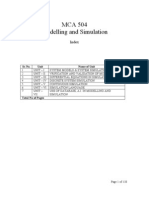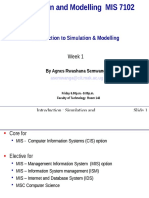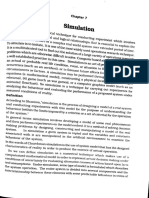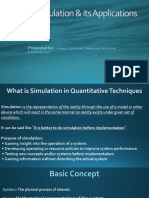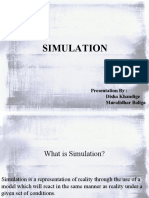0% found this document useful (0 votes)
8 views14 pagesEasy Simulation Presentation
The document presents an overview of mathematical modeling and simulation, detailing the steps involved in simulation, types of simulation (continuous, discrete event, and Monte Carlo), and their applications across various fields. It emphasizes the importance of mathematical modeling in representing real systems to predict and improve performance, with examples including epidemiological models and pedestrian movement in buildings. The presentation is aimed at providing foundational knowledge on simulation concepts to Dr. Saima Mushtaq.
Uploaded by
Umar ChishtiCopyright
© © All Rights Reserved
We take content rights seriously. If you suspect this is your content, claim it here.
Available Formats
Download as PPTX, PDF, TXT or read online on Scribd
0% found this document useful (0 votes)
8 views14 pagesEasy Simulation Presentation
The document presents an overview of mathematical modeling and simulation, detailing the steps involved in simulation, types of simulation (continuous, discrete event, and Monte Carlo), and their applications across various fields. It emphasizes the importance of mathematical modeling in representing real systems to predict and improve performance, with examples including epidemiological models and pedestrian movement in buildings. The presentation is aimed at providing foundational knowledge on simulation concepts to Dr. Saima Mushtaq.
Uploaded by
Umar ChishtiCopyright
© © All Rights Reserved
We take content rights seriously. If you suspect this is your content, claim it here.
Available Formats
Download as PPTX, PDF, TXT or read online on Scribd
/ 14








